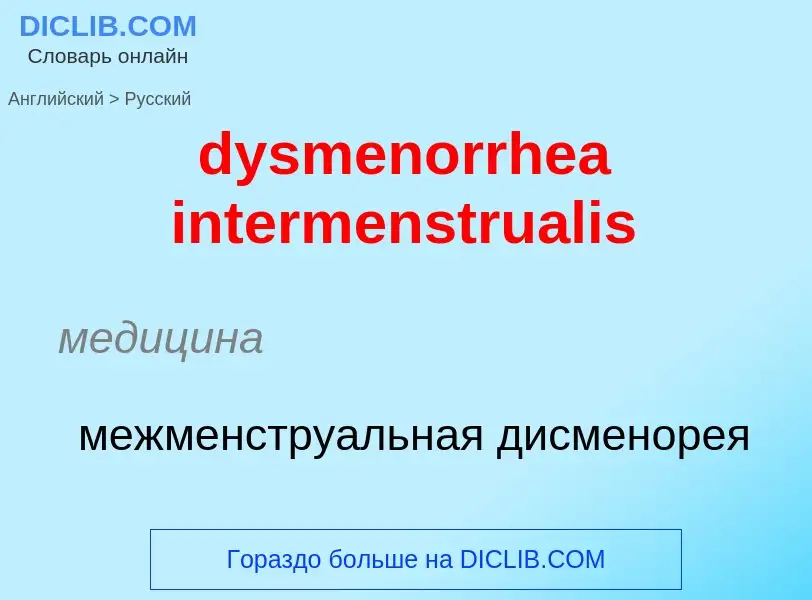Перевод и анализ слов искусственным интеллектом ChatGPT
На этой странице Вы можете получить подробный анализ слова или словосочетания, произведенный с помощью лучшей на сегодняшний день технологии искусственного интеллекта:
- как употребляется слово
- частота употребления
- используется оно чаще в устной или письменной речи
- варианты перевода слова
- примеры употребления (несколько фраз с переводом)
- этимология
dysmenorrhea intermenstrualis - перевод на русский
медицина
межменструальная дисменорея
медицина
вторичная дисменорея
[dismenə'ri:ə]
существительное
медицина
дисменорея
Определение
Википедия
Dysmenorrhea, also known as period pain, painful periods or menstrual cramps, is pain during menstruation. Its usual onset occurs around the time that menstruation begins. Symptoms typically last less than three days. The pain is usually in the pelvis or lower abdomen. Other symptoms may include back pain, diarrhea or nausea.
Dysmenorrhea can occur without an underlying problem. Underlying issues that can cause dysmenorrhea include uterine fibroids, adenomyosis, and most commonly, endometriosis. It is more common among those with heavy periods, irregular periods, those whose periods started before twelve years of age and those who have a low body weight. A pelvic exam and ultrasound in individuals who are sexually active may be useful for diagnosis. Conditions that should be ruled out include ectopic pregnancy, pelvic inflammatory disease, interstitial cystitis and chronic pelvic pain.
Dysmenorrhea occurs less often in those who exercise regularly and those who have children early in life. Treatment may include the use of a heating pad. Medications that may help include NSAIDs such as ibuprofen, hormonal birth control and the IUD with progestogen. Taking vitamin B1 or magnesium may help. Evidence for yoga, acupuncture and massage is insufficient. Surgery may be useful if certain underlying problems are present.
Estimates of the percentage of female adolescents, and women of reproductive age affected are between 50% and 90%. It is the most common menstrual disorder. Typically, it starts within a year of the first menstrual period. When there is no underlying cause, often the pain improves with age or following having a child.

